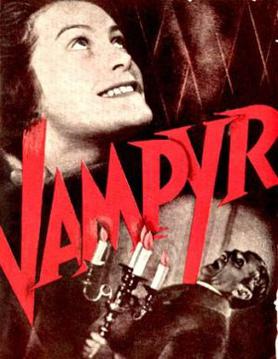A blog formerly known as Bookishness / By Charles Matthews
"Dazzled by so many and such marvelous inventions, the people of Macondo ... became indignant over the living images that the prosperous merchant Bruno Crespi projected in the theater with the lion-head ticket windows, for a character who had died and was buried in one film and for whose misfortune tears had been shed would reappear alive and transformed into an Arab in the next one. The audience, who had paid two cents apiece to share the difficulties of the actors, would not tolerate that outlandish fraud and they broke up the seats. The mayor, at the urging of Bruno Crespi, explained in a proclamation that the cinema was a machine of illusions that did not merit the emotional outbursts of the audience. With that discouraging explanation many ... decided not to return to the movies, considering that they already had too many troubles of their own to weep over the acted-out misfortunes of imaginary beings."--Gabriel García Márquez, One Hundred Years of Solitude
Wednesday, August 31, 2016
Vampyr (Carl Theodor Dreyer, 1932)
In the catalog of vampire movies, Vampyr is probably the second scariest after Nosferatu (F.W. Murnau, 1922). Which is odd, because its narrative, based by Dreyer and co-writer Christian Jul on a story be Sheridan Le Fanu, is fractured and almost incoherent and its characterization scattered. But you get the feeling that Dreyer himself really believed in the malevolent creatures he put on film, not surprising since most of Dreyer's films were in one way or another about faith. One story has it that the look of the film came about accidentally: Cinematographer Rudolph Maté shot an early sequence slightly out of focus, and when he apologetically showed it to Dreyer, the director insisted that was exactly how he wanted the film to look. Maté consequently shot many sequences through gauze. Accident also dictated some of the story: Dreyer insisted on location shooting, and in scouting for places to shoot, discovered the flour mill, giving him the idea for the scene in which the doctor meets his rather gruesome end. The lead character, Allen Grey, was played by a non-professional, Nicolas de Gunzburg, under the pseudonym Julian West -- Gunzburg was also the principal financial backer of the film. Most of the rest of the cast were non-professionals as well, and the sense that Vampyr is the result of serendipitous filmmaking has given the film a certain cachet over the years, especially with filmmakers and critics struggling with the restrictions that the corporate bottom line places on their art. To my mind, Vampyr is a collection of fascinating, disturbing images -- the man with the scythe crossing the river, the play of eerie shadows, the unusually successful double exposure that gives us Allen Grey's out-of-body experience, the sequence in which Grey sees himself in a coffin, and so on. But it seems to me to be brilliant parts in search of a satisfying whole.
Subscribe to:
Posts (Atom)
